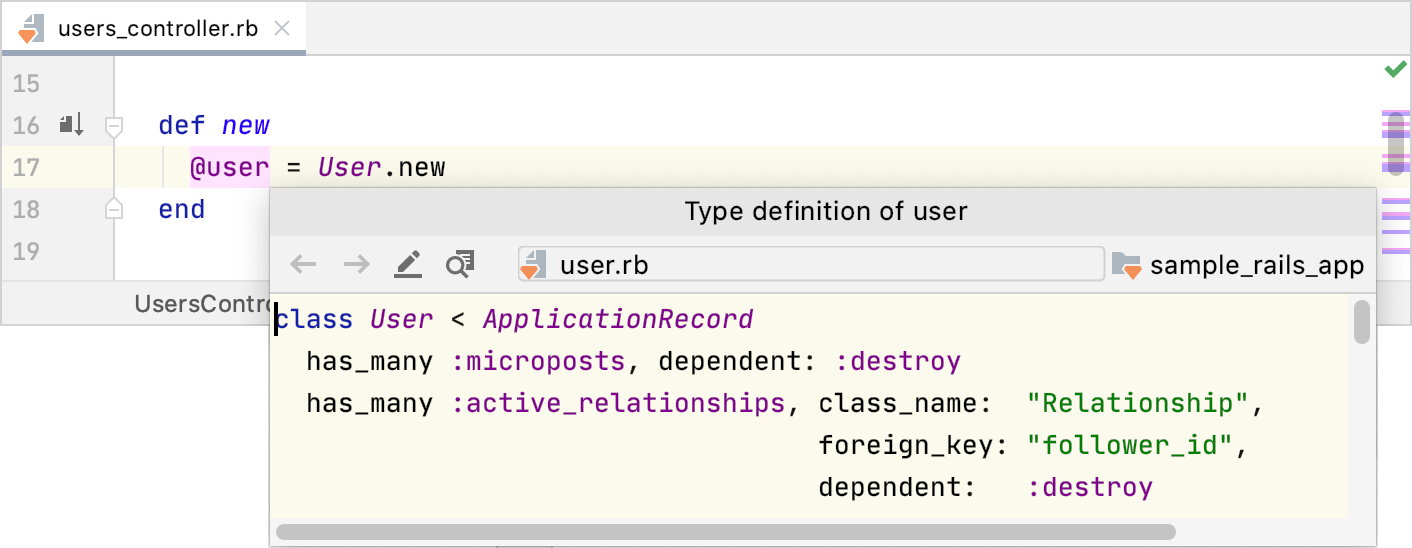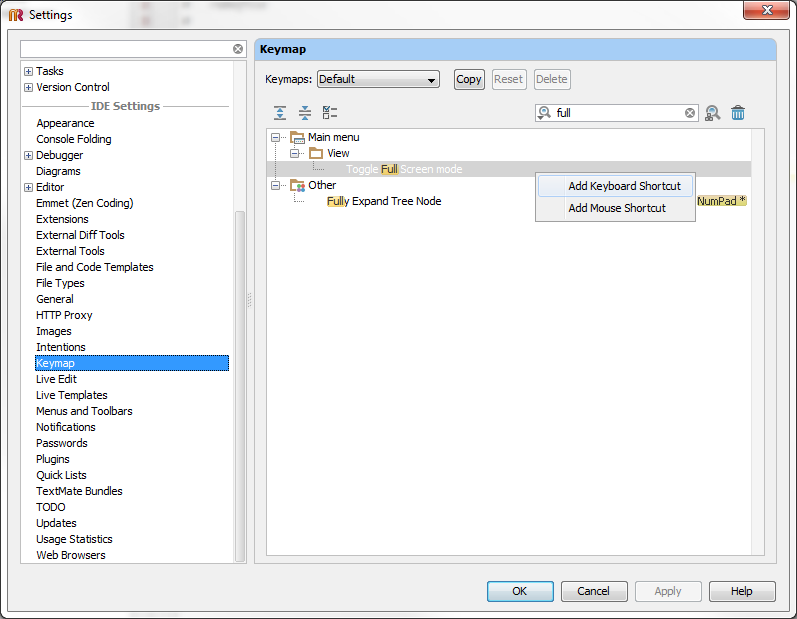
In RubyMine, I can use the “Show Navigation Bar” option (Alt+Home): I use that *all the time*! It allows me to quickly go to the same place where the current file is located, and then go to files in the same folder, or other folders in the surrounding area. What that does is to put the keyboard cursor in the file as it’s located in the Solution Explorer. A Resharper feature that I use a lot in Visual Studio is “Find in Solution Explorer” (Shift+Alt+L). Navigating through filesĪll the common options for navigating through files are there, such as “go to class” and “go to file”. I haven’t fully explored this integration, mostly because I’m relatively new to Git/Mercurial, but I do like what I’ve seen so far. It also does some nice things, such as when I add a new file to a project, it asks me whether I want to version it or not. For the most part I use the command line for committing, pulling, and pushing changes, but there are quite a few occasions when I rather have some visual way to invoke commands and see results (such as when comparing changes, or seeing history). RubyMine integrates very well with both Git and Mercurial for version source control. By creating “tasks” in RubyMine, I can easily adjust my workspace based on the files I need to work on for each task. Then, for whatever reason, I need to switch gears to work on a different task (fix bug related to Y), which will require me to open an entire different set of files. This is a feature I started using recently and am enjoying: say I’m working on a given task (implement user story X), and I have several files open. After you do the same thing with the mouse for 3 times (this is configurable), the plug-in shows a title tooltip to tell you what keyboard shortcut you can use to execute that action. The Key Promoter plug-in is also a neat way to learn RubyMine. I then look for the ones I’ve never used, see what they’re used for and how they’re accessed (at the lower half of the screen), and then give it a shot. The Productivity Guide lists features and how often I’ve used them. Another nice way to learn RubyMine is by using the Productivity Guide (available in the Help menu): Once in a while, I visit the training material for RubyMine: there’s the Quick Start, there are videos, there’s the default keymap binding (which I have a quick link to on my desktop!). As much as possible, I’m setting it up with the same keyboard shortcuts I have in VS for certain actions that I perform a lot (for instance, looking up files, classes, etc.). In small steps, I started to learn a few things and configure the environment to my liking.

I started off just by using it to open multiple files and work with them. Since a couple of people suggested RubyMine, I decided to give it a go the same company makes Resharper, so I guessed it’d be the easiest choice for me.

Some of my buddies swear by Vim, which I know I’m going to like when I get to it, but I figured this wasn’t the time to look into it yet, as I was already too busy learning lots of other stuff, so I didn’t want to get stuck at every other keystroke. NET development environment, and then figure out what was available for Rails development. I wanted feel the pain first, figure out what I missed from my regular. When I started messing with Ruby on Rails I decided to spend some time (ended up being two weeks) with no tools other than Notepad2 and PowerShell.
#Rubymine keyboard shortcuts plus#
NET development, I do not use only Visual Studio I use both CodeRush *and* Resharper, plus some other plug-ins, as well as tweaking VS a lot to bend it to my liking (color scheme, fonts, custom keyboard shortcuts, different window layouts based on single or dual monitor setups, etc.), besides having finally embraced PowerShell to run a couple of things, as opposed to waiting on Visual Studio to become “not busy”.
#Rubymine keyboard shortcuts software#
I am very particular when it comes to the tools I use for software development.


 0 kommentar(er)
0 kommentar(er)
